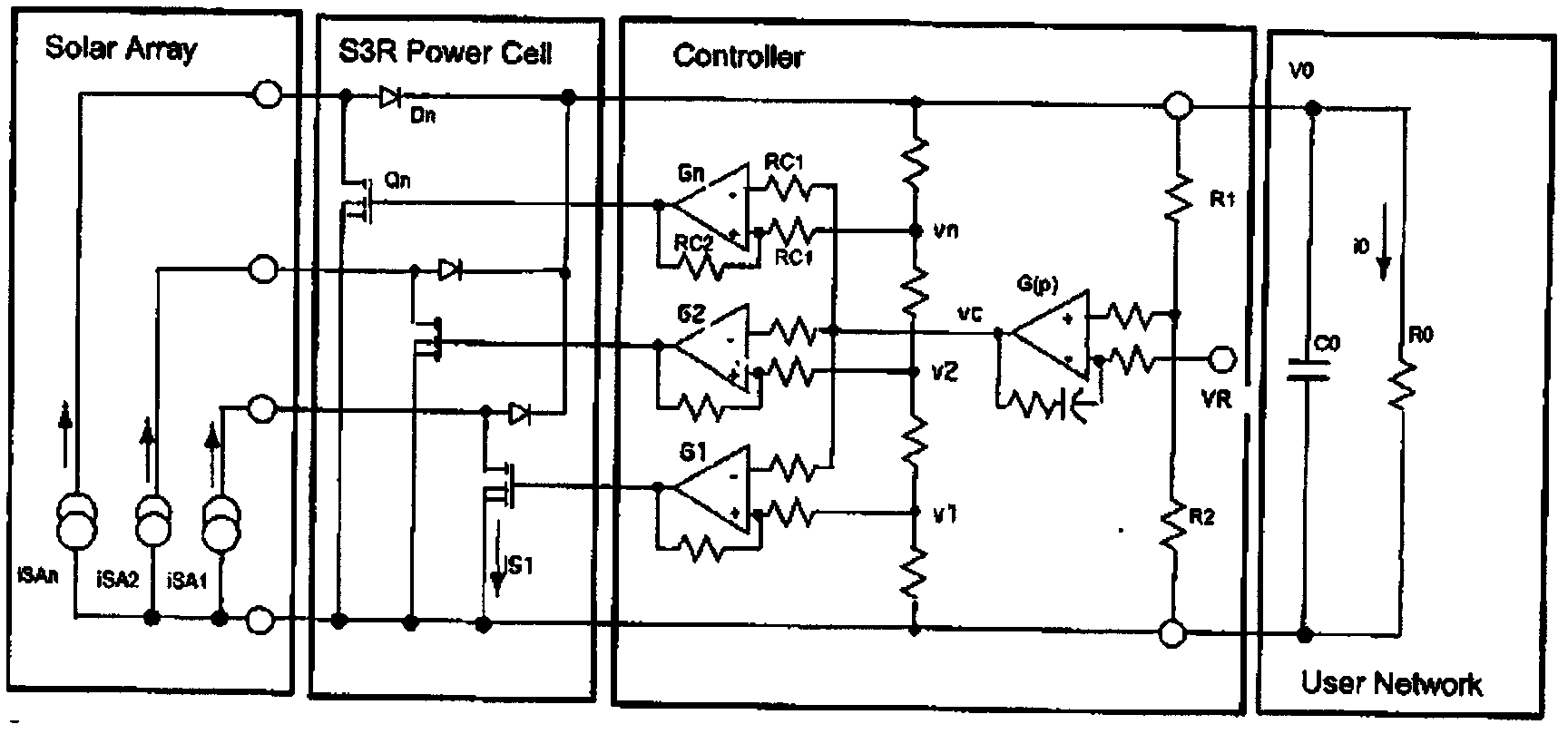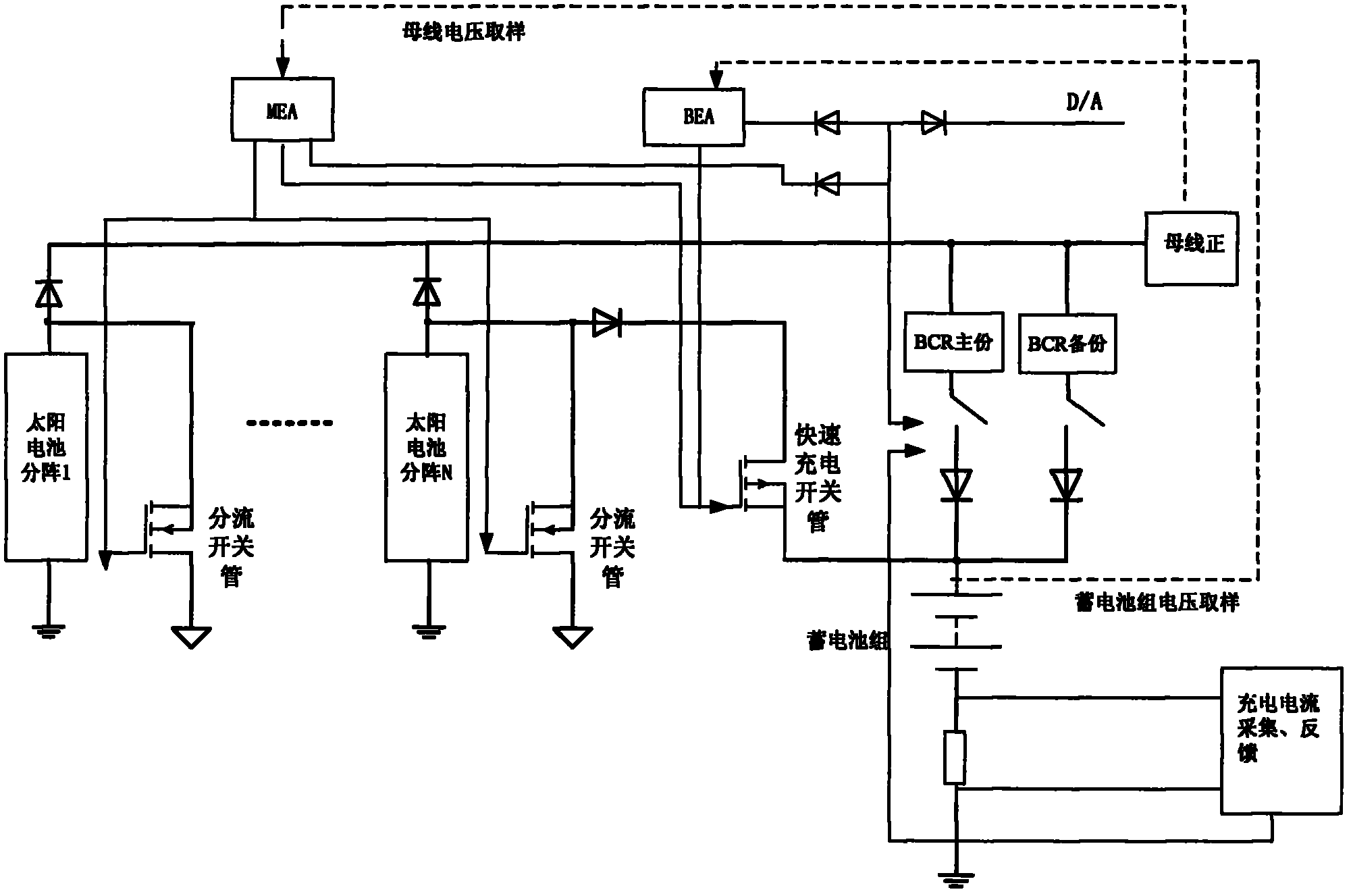Lithium ion storage battery charging method based on sequential shunt switching regulation (S3R)
A technology of a battery pack and a charging method, which is applied in the direction of charging/discharging of secondary batteries, repair/maintenance of secondary batteries, etc., can solve problems such as the inability to meet the charging control of high current, constant current and constant voltage.
- Summary
- Abstract
- Description
- Claims
- Application Information
AI Technical Summary
Problems solved by technology
Method used
Image
Examples
Embodiment Construction
[0016] The principle of S3R (Sequential Switching Shunt ReguIator) system is as follows: figure 1 As shown, it usually consists of a shunt regulator (SR), a charge regulator (BCR), a discharge regulator (BDR), and a main error amplifier (MEA). The basic principle is to combine the shunt regulator, charge regulator and discharge regulator The inverter is controlled by a three-domain controller to provide users with fully regulated bus voltage. The three-domain controller integrates the feedback system and the main error amplifier from the same reference voltage. The main error amplifier is the difference between the bus voltage and the fixed reference voltage, reflecting the level of the bus voltage. The higher the bus voltage, the higher the MEA voltage. higher. The MEA voltage (0-5V) is divided into three sections, which are the shunt regulation domain, the charge regulation domain and the discharge regulation domain, and the corresponding MEA voltages decrease sequentially....
PUM
 Login to View More
Login to View More Abstract
Description
Claims
Application Information
 Login to View More
Login to View More - R&D
- Intellectual Property
- Life Sciences
- Materials
- Tech Scout
- Unparalleled Data Quality
- Higher Quality Content
- 60% Fewer Hallucinations
Browse by: Latest US Patents, China's latest patents, Technical Efficacy Thesaurus, Application Domain, Technology Topic, Popular Technical Reports.
© 2025 PatSnap. All rights reserved.Legal|Privacy policy|Modern Slavery Act Transparency Statement|Sitemap|About US| Contact US: help@patsnap.com



